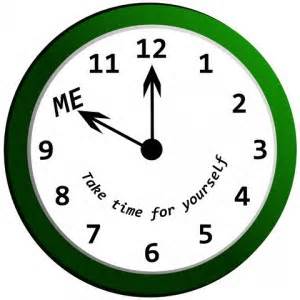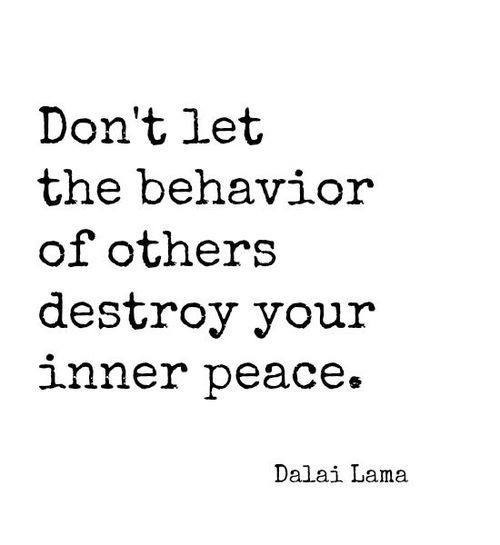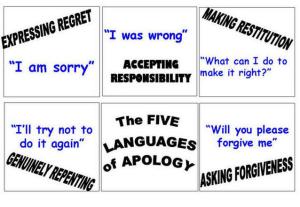people

Behavior

Tony Robbins on the Importance of Being Fearless
Tony Robbins on the Importance of Being Fearless
- By Jason Fell, www.entrepreneur.com
- View Original
- January 21st, 2014
Image credit: oprah.com Fear. It’s an emotion everyone experiences. We feel it when we think we’re in the presence of or doing something that might cause us pain or injury — physically, financially, etc. It’s what secures us from dangerous things.
But sometimes fear can stop us from doing great things. For example, fear of failure or loss of money often holds people back from becoming an entrepreneur and starting a business.
Fear is one of the many topics acclaimed life and business coach, author and motivational speaker Tony Robbins addresses in his seminars. You might have already heard of one way he does this: Robbins has attendees walk across burning coals. Yep, you read that right. The goal? To teach people to overcome their fears and take the first step beyond whatever might be holding them back.
While some have criticized the practice, others swear by it. Even Oprah did it. Her walk — as well as an in-depth conversation with Robbins — was featured on a 2012 episode of her TV show Oprah’s Next Chapter.
“People by nature are trained, almost innately, to be scared of fire and to keep away from it,” Robbins says. “That is why walking through a pathway of fire is a powerful expression of moving beyond one’s fears. Walking over any hot surface does encompass some risks, but it has been done safely for centuries, and when administered properly can have enormous value as a reminder of what we are truly capable of.”
Related: Tony Robbins on the 7 ‘Forces’ of Business Mastery
So, it’s not so much about the act of walking over burning hot coals, but about having people face and overcome something in spite of fear.
“It’s simply a metaphor for them to break through their fears and limitations,” Robbins says. “If you look at what holds people back from expanding and deepening the quality of their lives, what prevents them from taking the actions that are necessary to transform their body, relationships, career, business or impact their kids, invariably, it’s fear — of failure, of success, of rejection, of pain and of the unknown.”
In his business seminars, Robbins encourages entrepreneurs to move past fear, in their personal and professional lives, in order to become more confident, productive and successful at everything they do. “Just like anyone can start their day with a killer workout, find a way to master a craft, find meaning in their work or create a passionate and loving relationship,” he says, “the secret lies in being able to break through the fear and unlock the limiting beliefs to create the life of your dreams.”
I had an opportunity to fire walk 11 years ago and it was an amazing feeling,although I do not think I really appreciated what it meant to achieve it.
Maybe it’s time to try the walk again.
What do you think?

The Non-Apology Apology
The non-apology apology,which sounds like an apology but doesn’t really accept any blame.For example,”We’re sorry if this upset you”.Or “ I’m sorry that you don’t feel we lived up to your expectations.”
Whatever.
A good apology accepts responsibility.
It has no conditional if phrase attached.It shows people that the buck stops with you.
And then it provides real details about what happened and what you’re doing to prevent it from happening again.
And it seeks a way to make things right.
Here’s another bad one:”We apologise for any inconvenience this may have caused.”Oh,please.
Lets break down why that’s bad:
“…We apologise…..”If you spilled coffee on someone while riding the underground,would you say,”I apologise”?No,you’d say,”I’m so, so sorry!”Well,if your customer service is critical to you customers,an interruption to that service is like spilling hot coffee all over them.So use the appropriate tone and language to show that you understand the severity of what happened.Also the person in charge should take the responsibility.An “I” apology is a lot stronger than a “we” apology.
“……..any inconvenience…..” If customers depend on your service and can’t get to it,It’s not merely an inconvenience.It’s a crisis.An inconvenience is a long line at the supermarket.This isn’t that.
“…….this may have caused”The “may” here implies there might not be anything wrong at all. That’s a classic non-apology apology move.It slights the very real problem(s) that customers are experiencing. If this didn’t affect them,you don’t really need to say anything. If it did affect them,then there’s no need for “may” here.Stop wavering.
So what’s the perfect way to say you’re sorry?There’s no magic answer.Any stock answer will sound generic and hollow.
You’re going to have to take it on a case by -case basis.
The number-one principle to keep in mind when you apologise:How would you feel about the apology if you were on the other end? If someone said those words to you,would you believe them?
Keep in mind that you can’t apologise your way out of being an idiot. Even the best apology won’t rescue you if you haven’t earned people’s trust.Everything you do before things go wrong matters far more than the actual words you use to apologise. If you’ve built rapport with customers,they’ll cut you some slack and trust you when you say you’re sorry.
From Rework: Change the way you work forever.
Ian Williamson

Are you at PEACE?
Are you at Peace?
To find peace we must moderate and control what we allow our brains to take in.
We all use computers and know “Garbage in-Garbage out.
Change your brain-change your life.
Learn something new every day even if it’s for only for 15 minutes,this will keep the grey matter excited.
Keep the brain healthy.
You are at your best in the morning,use this time to spend 15 minutes learning something new:
Communicating with your colleagues in a new way,
A new cookery recipe,
Reflecting on yesterday and what did i learn.
Start a diary.
Understanding the depth of life.
Materialistic things do not show how happy or peaceful we are.
We do not have to prove to anyone how successful we are, certainly not by shouting out how big my house is,or how great my family is,or look at my fancy new car.
This is not peace.
Let go
I would much rather to choose peace and be happy instead of the above.
Even when things are going bad in your life we can choose peace.
If you take one thing away from http://www.MakeThingsHappen.cc/ you have already made the choice.
Being able to release and let go.
Let go of the material wants.
Letting go of comparing to others.
Let go,measuring your success by material wealth.
If you constantly want materialistic things,this is what you will get.
Most people want more money,more love and more time.
Because of the want,YOU will receive the WANT.
Release old regrets and excuses.
Let go of negative and insensitive people.
Let go of negative news.
Stop watching the news.
Stop watching the soaps.
Avoid surrounding yourself with negative people and negative situations.
Accept CHANGE, and let go “ that everything has to stay the same”
Lose the belief that fulfillment is at the end of your journey
You write your story.
Recognise the roller coaster of life and that there are going to be ups and downs,Life is not going to be pain free.
From science research you must start the day on a positive and release the negative.
Find new energy.
Start writing a journal.
As we work on our brain we learn new things,as we work on our attitude we see new things occur.
We start to see peace.
Commit to starting your day in the right way.
Listen or read something positive before you start your day.
Start each morning by saying “I choose peace instead of this”
You are in the right place at the right time,JUST believe it.
Start with peace and release some of the stress and mental anxiety.
So that you can find the energy for the new ideas to come through.
Take one thing away from this blog, Allow peace and Release the Negative.
Allow peace and release the want.
Use Peace And Happiness instead.
Ian Williamson
http://www.makingthingshappen.cc/

30 minutes of me time.
We are at our most productive and alert between 6am-9am.
Today I had my best gym session at 7am:
1.Feel refreshed
2.Gym was not busy
3.Had the rest of the day to spend with the wife.

It is very easy to make time for yourself just by getting up 1 hour earlier than normal.
Why not read a few pages of a book or starting writing your own blog.
Even the washing up from the night before.
Complete your worst tasks first,so that you can enjoy the rest of the day.
Before you go to bed write down on paper or your electronic device a small to-do-list.
Just 3-4 items,anymore and you will not complete them.
By doing this you start to control your day and create ME time.
My favorite time is sitting in the conservatory at 5.30am,hearing the clock ticking and the rain on the roof,reading a couple of pages of a book with no disturbances.
We can all do this if we are just prepared to get up earlier.
Use your alarm clock as an opportunity to improve yourself and lifestyle,not just to hit the snooze button because it’s just another day.
Use any available time you have to learn something new.
Listen to pod casts in the car instead of the radio
When queuing in the supermarket,send that email,pay that bill.
By utilising your time better,you create quality time doing the things YOU like to do:
Spending with your wife,
Family,
Project for work,
More time on the golf course.
It’s your choice to CHANGE.
I choose CHANGE.
Thank you for taking the time read this blog.
Ian Williamson
Please visit my website.

How Simple Mini Habits Can Change Your Life
How Simple Mini Habits Can Change Your Life

“The only way to make sense out of change is to plunge into it, move with it, and join the dance.” ~Alan Watts
It was late 2012, just after Christmas, and like many others I was reflecting on the year.
I realized that I had ample room for improvement in too many areas of my life, but knowing that New Year’s Resolutions have a poor 8% success rate (University of Scranton research), I wanted to explore some other options. I knew I wanted to start before January 1st too, because arbitrary start dates don’t sit well with me.
On December 28th, I decided that I wanted to get in great shape. In the previous days and weeks, however, I hardly exercised at all and felt quite guilty about it. My goal was a 30-minute workout, and it seemed impossible.
I wasn’t motivated, I was tired, and my guilt was making me feel worthless. Feeling stuck, I remembered a technique I learned from a book, and little did I know that this technique would change my life in a big way in 2013.
The technique is from the creativity book Thinkertoys, and it is to consider the opposite of an idea you’re stuck on. So I looked at my 30-minute exercise goal, and my giant fitness plan to get in great shape, and I thought about the opposite.
You could say the opposite is eating fast food and sitting on the couch, but the opposite that came to my mind was one of size.
What if, instead of carrying around this overwhelming fitness anvil on my shoulders, I just did one push-up?
Initially, I scoffed at the idea. How absurd to do a single push-up and act as if it means anything! But when I continued to struggle with my bigger plans, I finally gave in to the idea and did one, and since I was already in push-up position, I did a few more.
After that, my muscles were warmed up, and I decided to try one pull-up. Just like you guessed, I ended up doing several more. Eventually, I had exercised for 30 minutes.
My mind was blown—did I just turn a single push-up into a full workout? Yes, yes I did.
The One Push-Up Challenge Is Born
From here, I challenged my blog readers to do at least one push-up per day for a full year. People have had great success with it, and here’s what it turned into for me: For the last 3+ months, I have gone to the gym three to six times per week to exercise and I’m in great shape because of it. Now I know why it works.
I have always held a keen interest in psychology and neuroscience, and I study them for my writing. So when I read about the studies on willpower that show it’s a limited resource, everything started making sense.
I couldn’t do my 30-minute workout because my willpower wasn’t strong enough or was depleted. But I could do one push-up and segue into a 30-minute workout because it only required a tiny amount of willpower to start, after which my body and mind stopped resisting the idea.
Of course, this concept does not only apply to fitness, but to any area of your life you wish to change. And I believe I’ve found the perfect way to leverage this technique – habits.
What’s More Important Than Your Habits?
Nothing. Habits form about 45% of your total behavior, according to a Duke University study. Not only that, but they are behaviors that you repeat frequently, which compounds their significance in your life. Habits are your foundation, and if this foundation is weak, you won’t be happy with the way you live.
The reason people fail to change their lives, and fail to instill new habits, is because they try to do too much at once. In simplest terms, if your new habit requires more willpower than you can muster, you will fail. If your new habit requires less willpower than you can muster, you will succeed.
The calculation can’t just be for one instance, however, but also for when you’re tired and your willpower is zapped. Can you continue it then?
One thing I’ve been wanting to do more is write. It’s therapeutic for me and I write for a living, so it’s fairly important that I practice. When I found that I wasn’t writing as much as I should, I found out how to combine the power of The One Push-Up Challenge with a habit plan.
How To Change Your Life With Mini Habits
Mini habits are exactly as they sound. First, you choose a desired habit or change you’d like to make—it could be thinking more positively, writing 1000 words a day, or reading two books per week. I’ve had success doing three at once.
Next, you shrink these habits down until they are “stupid small,” a term I made up because when you say the requirement out loud, it is so small that it sounds stupid. Here are mine:
1. Write 50 words per day (article, story, etc.)
2. Write 50 words per day (for the habits book I’m writing)
3. Read two pages in a book per day
Easy, right? I could complete this list in ten minutes total. So far, I’ve met these daily requirements 100% of the time, and then much more.
I’ve actually written one to two thousand words and read 10-30 pages per day, for these 12 days in a row and counting. Prior to this, I wasn’t reading at all and writing very little.
It works because your brain falls for the bait.
“Oh, only 50 words? I can write that.”
And then you start. And you’ll find, like I have, that one you start, good things happen.
Ten Daily Mini Habit Ideas
1. Compliment one person
2. Think two positive thoughts
3. Meditate for one minute
4. Name three things you’re thankful for
5. Do one push-up
6. Write 50 words
7. Read two pages
8. Do ten jumping jacks
9. Go outside and take 100 steps
10. Drink one glass of water
You can change nearly any area of your life; and at one mini habit at a time, it’s easier than you think.
When you remove the pressure and expectations, you allow yourself to start.
What mini habit(s) will you start today?
Photo by Digo_Souza

Great Minds

Spend life








